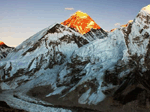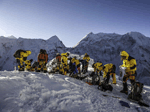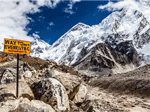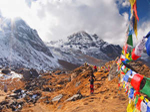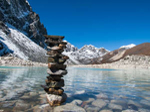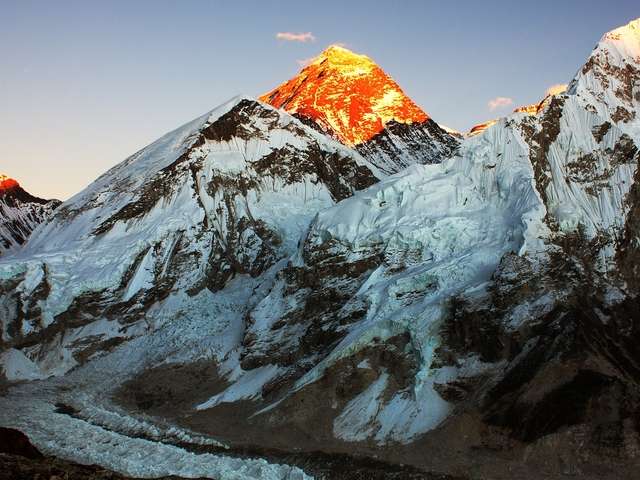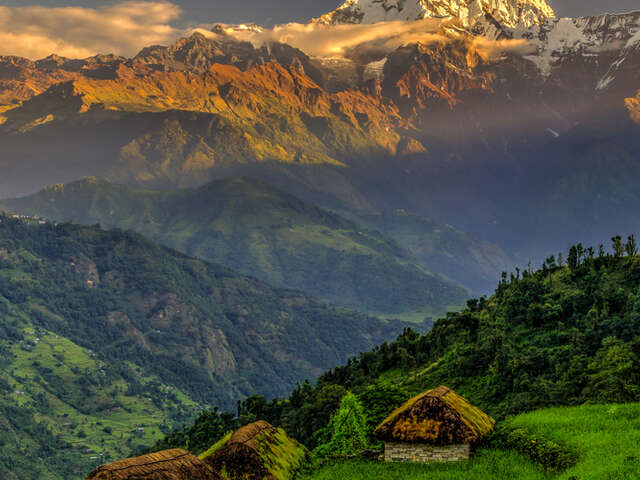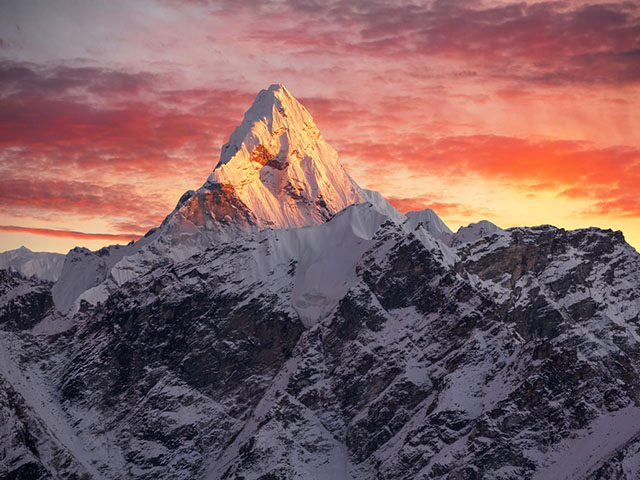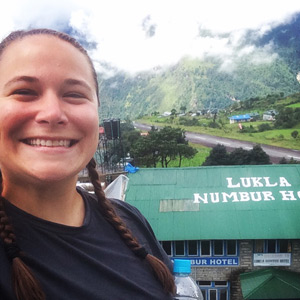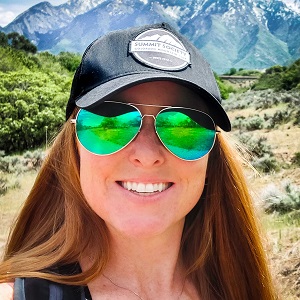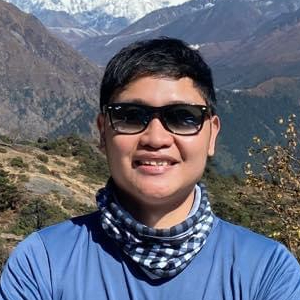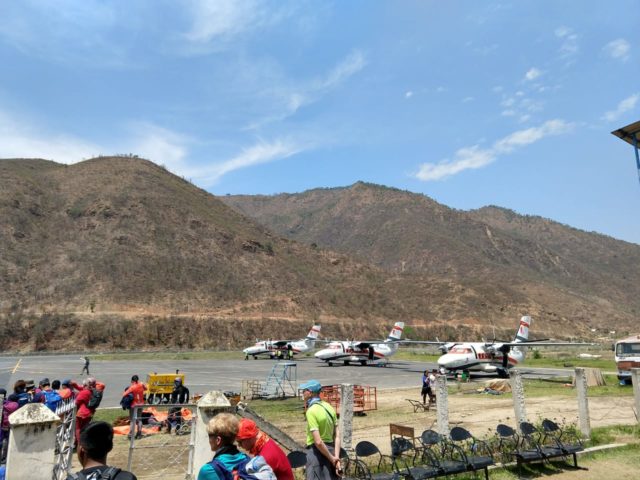
Updated: March 31st, 2025
Lukla flights were again diverted from Kathmandu to Ramechhap in March and we expect diversions to continue until the end of the current trekking season. Here is what it will mean for your trek if you need to fly to Lukla via Ramechhap.
Continue reading >

Trekking in the Everest Region is some of the most beautiful in the world, and getting there is an adventure of its own. Nearly every trek begins with a flight from Kathmandu to the Tenzing-Hillary airport in Lukla, a small single landing strip airport high in the Himalayan mountains. It is the sole vehicle approach to the Everest Base Camp trek, and many others in the region.
Continue reading >
Updated Aug 30th, 2023: Coronavirus Updates
Nepal has reopened and has dropped all Covid related restrictions. Proof of vaccination and/or a negative test result is no longer required to enter the country.
Continue reading >
We include two night hotel nights with every Everest Trek booking and are happy to arrange extra hotel nights for you in Kathmandu either before or after the trek. We normally use the Hotel Address which is centrally located in Thamel, the tourist district of Kathmandu. If the Address is not available on a given night we will book you at a different hotel of similar quality such as the Hotel Jampa.
Continue reading >
Due to Nepal’s extreme geography, its biomes range from tropical to arctic with everything in between. This wild and biodiverse country has humid lowlands where one-horned rhinos and leopards meander and high cliffs where snow leopards and blue sheep leap from sheer face to sheer face. While on treks in Nepal it’s possible to see stunning animals found nowhere else in the world, such as red pandas and Himalayan butterflies. In the country’s national parks you can see rare river dolphins, bizarre looking crocodiles, and take jungle safaris to scout out tigers and leopards. Explore with us in this blog post some of Nepal’s most fantastic wildlife!
Continue reading >
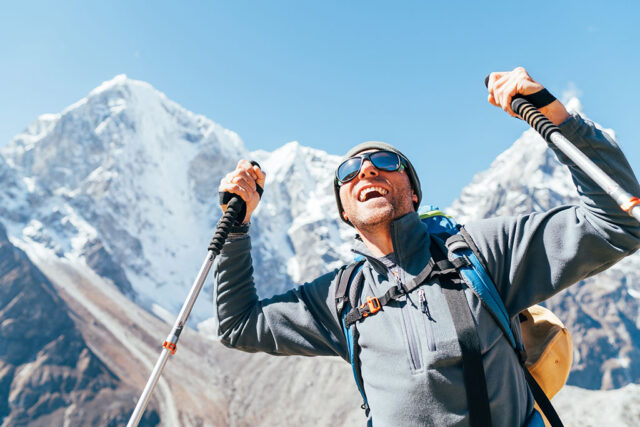
Everest Base Camp is regarded as one of our planet’s best treks for good reason. It takes you through the heart of the Himalayas to the foot of our planet’s tallest mountain. On the way you will pass caravans of yaks, ancient Buddhist monasteries, bustling sherpa villages, and cross over suspension bridges over gaping ravines. Not to mention the sensational views of the snow covered mountains; Ama Dablam, the matterhorn of the Himalayas, will be the first to capture your heart. Followed closely behind by Cho Oyu, Lhotse, and Makalu -three of Earth’s tallest peaks! To get the most out of this once in a lifetime journey, continue reading our guide for first time trekkers!
Continue reading >

Home to the world’s highest mountains, most visitors to Nepal head straight for the Himalayas. While it’s undoubtedly one of the world’s greatest trekking destinations, it would be ridiculous to assume that all Nepal has to offer is the Himalayas. It’s a country with an incredibly diverse and rich history; a lavish tapestry of interwoven cultures, vibrant colors and experiences. Here the opportunities for adventure abound, safari through tropical forests in search of rhinos and tigers, visit the world’s holiest pilgrimage sites, or paraglide over turquoise lakes. The possibilities are endless.
Continue reading >
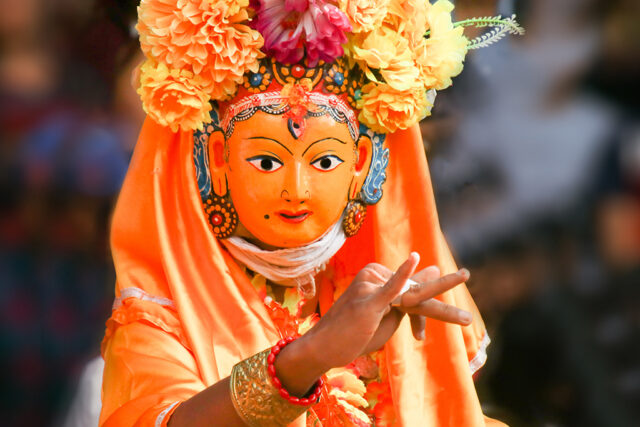
Nepal’s festivals are based in ancient, fascinating Hindu and Buddhist mythology going back centuries. It’s no surprise that in a country so rich in culture, customs and colors, the festivals are breathtaking and intricate. Mask dances are frequently performed retelling the epic sagas of demons versus deities, enshrouding all the festivals in a sense of mysticality. It has been said there’s not a day in Nepal that goes by without a festival being celebrated. Here are some of the most fantastic festivals this ethnically diverse country celebrates!
Continue reading >
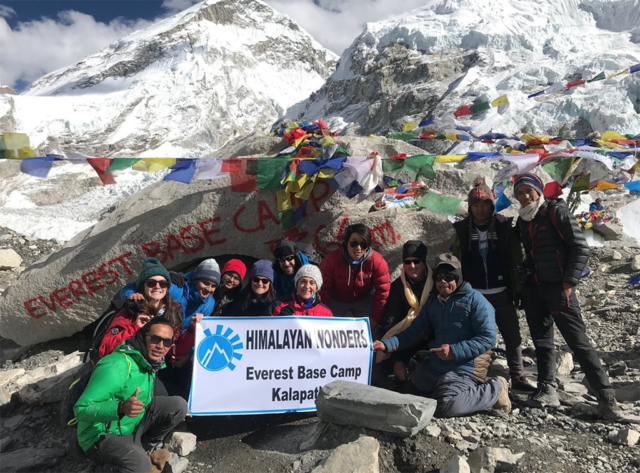
The trek to Everest Base Camp is nothing less than a playground for photographers. From start to finish, there are visually interesting elements ranging from stupas to vibrant monasteries all painted against the arresting backdrop of our planet’s tallest mountains. For those who are vying for the best photos the trek has to offer we’ve put together a photo guide of the best locations for shots along the trail!
Continue reading >
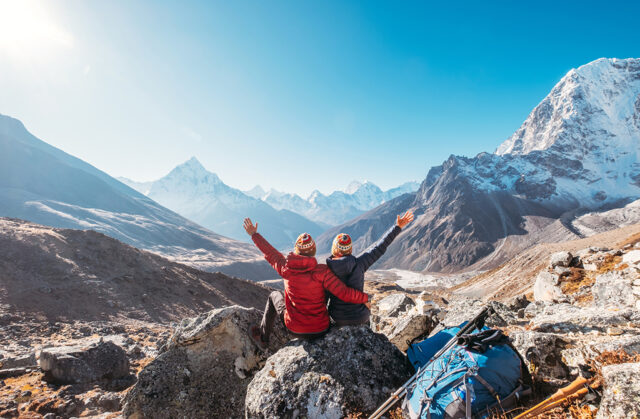
Adventure: “An enterprise of hazard; a bold undertaking, in which hazards are to be encountered, and the issue is staked upon unforeseen events.”
Webster’s American Dictionary.
Welcome bold adventurers to Nepal! Now, we are sure that everyone on our Base Camp Treks knows exactly what they are getting into when they travel to a remote part of the world to ascend to the base camp of the World’s tallest mountain, but just in case your biggest adventure in the last year was walking around London without Google Maps, then here are the top 10 things that may surprise you while trekking. A little bit of mental preparedness goes a long way.
Continue reading >

The Everest Base Camp trek is a mecca for adventurous, nature loving souls and hard core granolas alike. It offers pristine vistas for aspiring landscape photographers to capture and is a formidable challenge beckoning to trekkers the world over. If you’re reading this, you’re likely already caught in the allure of Nepal’s most impressive trekking region and are ready to have the question of “When’s the best time to go?” answered. The short answer: The most popular months to go are April, May and October. February, March, November and December are also great months to trek Everest Base Camp. However, the complete answer is more nuanced. Would you like to go with cooler weather and less crowds? Or warmer weather and see the tent city of Everest Base Camp in full swing? Read our comprehensive guide to decide which month is best for you! Please don’t hesitate to reach out if you’d prefer an adventure consultant to help you plan a trek curated especially for your schedule.
Continue reading >

Ready to take your trekking to the next level? The Nepal Mountaineering Association (NMA) has designated 28 trekking peaks that can be tackled without an expedition permit. All of the trekking peaks are less than 7000m (22965 Feet) and most can be climbed by anyone with a moderate experience level in mountaineering for a relatively small fee. Want to go above 7000m? You will need to pay quite a bit more as these peaks qualify as expedition peaks.
Continue reading >

Are you preparing to trek Everest Base Camp or another tea house trek in Nepal? If so, you may be looking for a comprehensive packing checklist. Packing the proper clothing, equipment, and supplies for your Everest Base Camp trek will go a long way in ensuring you have a great trekking experience. As you pack for Everest Base Camp, remember that your gear will be divided into two packs: your daypack that you will carry each day as you trek, and your duffle bag which will be carried between tea houses by porters. All extra luggage can be left at the hotel before you begin your trek. At the start of every morning, your porters will take your duffle and carry it up to the next tea house. It will be difficult or impossible to access your gear from your duffle bag until the evening when you arrive at your tea house. This means you should pack anything you may need each day during your hike in your daypack. However, to make trekking easier, you should keep your daypack as light as possible—so only carry the essentials. This includes water, snacks, camera, headlamp, poncho, extra layers, and sun protection. Everest […]
Continue reading >

Training for Everest Base Camp should include improving cardio endurance, strength endurance, and being comfortable carrying a daypack uphill for long periods at a time. At least 8-12 weeks before your trek, you should begin hiking or taking long walks at least 1 day per week (focus on duration more than distance). You should build up to being able to walk or hike for 5-6 hours with minimal breaks. If you don’t have significant hills or mountain terrain in your area walk hill intervals on a treadmill and stair stepper 2x per week. Most people will also benefit from completing full-body strength workouts twice per week. You should always check in with your doctor before taking on a physical challenge like trekking Mount Everest Base Camp. You should also refer to your doctor before starting any training program.
Continue reading >

Are you dreaming of trekking to Everest Base Camp? The trip through the Himalayas to stand at the base of Everest in person is breathtaking. There’s a reason this majestic peak is one of the 7 Natural World Wonders—standing at 5,354m with Mt. Everest towering above you is surreal. While we believe almost anyone can enjoy trekking to Everest Base Camp, there are some things to make the trip go more smoothly and enjoyably. In this article, we’ll talk about some of the best tips, tricks, and travel hacks for trekking Everest Base Camp.
Continue reading >
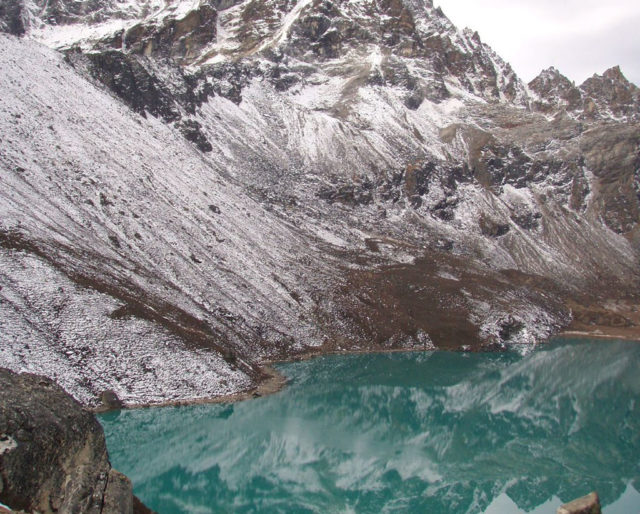
The Three Passes Trek is a 20 Day long adventure and is equally one of the most challenging and the most rewarding treks offered in the Himalayas. It gives adventurers the chance to visit the ever popular Everest Base Camp, while also taking them off the beaten path to some of the most astonishing (and too often missed) sights that Nepal has to offer. As the name would indicate, this trek takes you through three different passes: the Cho La (5400 m), Kongma La (5535 m), and Renjo La (5360 m) as you traverse across the rich landscape. You’ll take in the glistening Gokyo Lakes, traditional villages, the large Ngozumpa Glacier, and, of course, unbelievable views of 4 of the 10 of the world’s tallest mountains: Cho Oyu (8,201m), Makalu (8,463m), Lhotse (8,516 m) and Everest (8,850m).
Continue reading >
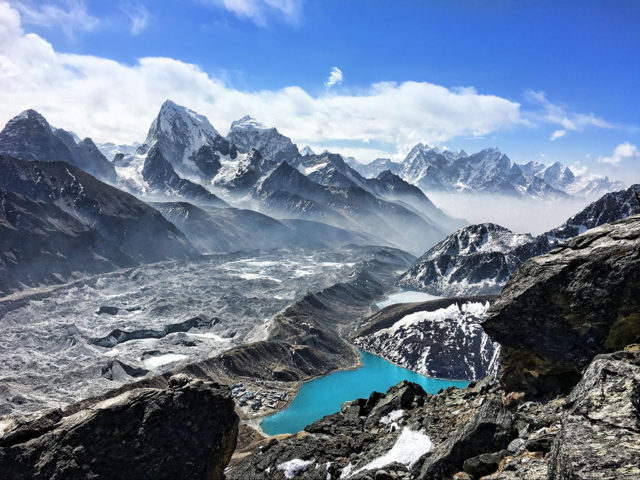
So many people dream of trekking in Nepal–of hiking up through the clouds to the base of the world’s tallest mountain: Everest. The Everest Base Camp trek has become the most popular route for those seeking adventure in the Nepalese mountains. But there are so many more hidden paths and gems waiting to be explored beyond Everest Base Camp, one of which being the Gokyo Lakes. Adding the trip to these spectacular lakes onto the Everest Base Camp itinerary is easily done, and if you’re willing to add on the three extra days and make the difficult hike over Cho La Pass it can be extremely rewarding. So, is the Everest Base Camp and Gokyo Lakes Trek for you?
Continue reading >

Island Peak or Imja Tse (6,189m / 20,305 ft) lies in the center of the Everest Region of Nepal and is the most popular of Nepal’s 33 designated trekking peaks. It’s a great summit for first time climbers who are looking for something a little more challenging then the Everest Base Camp Trek and a good peak to start with for those with more mountaineering ambitions in Nepal. The peak was first climbed in 1956 by a Swiss Team and was named in 1951 by Shipton’s party, who viewing it from Dingboche described it as “Island in a sea of Ice.” The summit itself sits almost in the middle of a large valley and is surrounded by giant peaks with Everest to the North, Makalu to the east and Ama Dablam to the west. What follows are nine tips to get you.
Continue reading >
Island Peak or Imja Tse (6,189m / 20,305 ft) sits in the center of the Everest Region and is a great peak for first time climbers and for those with more mountaineering ambitions in Nepal. The summit stands by itself in the middle of a large valley and is surrounded by giant peaks with Everest to the North, Makalu to the east and Ama Dablam to the west. What follows is an interview with Xavier Gaston Hervé Koenig who our records indicate he is the first Mauritian ever to have reached the summit. He did it with us in October 2016.
Continue reading >

Crossing over Thorong La Pass is both the highlight and the biggest challenge of completing the Annapurna Circuit. Trekking the Annapurna Circuit has changed a lot over the last twenty years as roads have replaced trails along a significant portion of the traditional trek. The stretch of the trek from Manang to Mulktinath over the pass is the last stretch of the circuit that remains completely roadless.
Continue reading >

Wondering what the most beautiful peaks are in the Himalayas? Here is a quick look at what I think might be the top 14. I had to skip a few peaks like Mt. Siniolchu & Pandimin Sikkim and Changabang & Bhagirathi II in the Garwhal Himalayas since I didn’t have any photos on hand to do them justice. If I didn’t include your favorite in the list please leave a comment and when it comes time to update this post I’ll look to include it. This list is in no particular order.
Continue reading >
Wondering what the 15 greatest treks in the Himalayas are? Home to the world’s highest mountains most trekkers head straight for Everest Base Camp and while it’s a great option the opportunities for adventure abound among the peaks of the Himalayas of which over 100 exceed 7000m or 24000 feet. Here is a quick rundown of 15 great treks from Bhutan to India starting with Nepal.
Continue reading >

The Langtang trek is a relatively short trek (from 6 to 9 days) that combines fantastic mountain views and excellent tea house accommodation. What’s more is that Syabrubesi (1400m) the jumping off point for the trek is just a six hour drive from Kathmandu. Compared to the Everest Base Camp or Annapurna this trek receives just a handful of visitors.
Continue reading >

If you are thinking of the Langtang Trek make sure that you save at least a few days for some of the great day hikes in the upper part of the valley or better yet arrange for some camping equipment and arrange an extra night beyond all the tea houses. Here is a look at four of the best options for day hikes from Kyanjin Gompa.
Continue reading >

Kyanjin Ri (4773m / 15655 ft), like Kala Patthar on the Everest Base Camp Trek, is the highest point most trekkers reach on the Langtang Trek. Kyanjin Ri is a small hill by Himalayan standards that sits just to the north east of Kyanjin Gumba (3830m). Its well worth the 3 to 5 hours it will take to get to the summit to see the fantastic views of the upper Langtang Valley and surrounding peaks and glaciers. Here is a quick summary of how to reach the top and what you will see.
Continue reading >

Almost everyone headed to Everest Base Camp spends at least a day acclimatizing in Namche Bazaar the largest village in the entire Khumbu Region. We typically organize our Everest Base Camp Trek so that you can take a rest/acclimatization day in Namche and our guests usually hike up to the Everest View Hotel for a great panorama of the Himalayas which includes Everest, Ama Dablam and Lhotse. While this is a great excursion, it’s good to know what the options are. If you’re trekking with us to Base Camp and one of these sounds more appealing than the Everest View Hotel hike, just let us know and we can arrange it for you. Here’s a look at what we think are the four best day hikes from Namche:
Continue reading >

Last Update May 25,2015: We have been getting lots of questions about the upcoming trekking season and the condition of the trail and teahouses along the Everest Base Camp Trek after the earthquake. That good news is that all the treks scheduled for next season September to November 2015 are going. The region did experience damage from both earthquakes (the 7.8 on April 24th and the 7.3 on May 12th), but the trail is in good shape and most the teahouses will be operational for the upcoming season. I got a firsthand look at the region after the first earthquake and several of our clients were trekking at the time of the second quake. This report is based on my observations, that of our guides living in the Khumbu and those of several clients who were on the trek after the second quake.
Continue reading >

Thanks to everyone for their contributions and donations towards our relief work in Nepal. Together we have been able to collect over $10,000 and in the process help over 200 families including those of our trekking guides who had their homes destroyed. Here is a brief overview of how we have been putting the funds to work over the past few weeks and what the plans are going forward. The first thing we wanted to do was help as many people as we could as fast as possible. We delivered sacks of rice to over 200 families in the small village of Tripureshwor (See the full blog post). Several of our guides live in this village and assisted us immensely in getting permission to do this and working with the local leaders to determine who was actually in the most need of assistance (the complete list of people receiving rice). The second thing we wanted to do was to help some of our trekking guides and staff at the Hotel Pilgrims whom we are quite close with. Every individual who received assistance from us had their homes either entirely or almost completely destroyed. The quickest and most effective way to […]
Continue reading >

The Himalayanwonders team just returned from the Dhading Region of Nepal where we successfully distributed 6000kg of rice to 200 families. Here is a brief report of my experience in the region. On the morning of May 4 I flew from Lukla to Kathmandu in order to help organize our relief efforts. Nishes and I spent the day of the 4th putting plans in place to buy the rice and transport it to the small village of Tripureshwor (see it on Google maps). Our plan was to buy the rice and arrange for transport in Dhading Besi rather than Kathmandu as the cost worked out being cheaper. Dhading Besi is the district headquarters of the Dhading region and one of the larger cities. The eight of us representing HimalayanWonders left Kathmandu in a rented Scorpio Mahindra. The road to Dhading is the same as the main road which goes to Pokhara but heads north from Trishuli towards the mountains about 70km from Kathmandu. We continued north on a secondary but still paved road to Dhading Besi where we purchased the rice and paid for the transport. We rented one truck and one tractor with trailer as no other trucks were […]
Continue reading >
